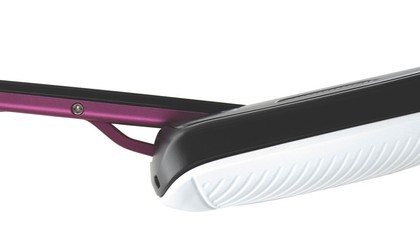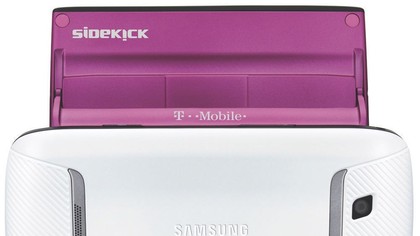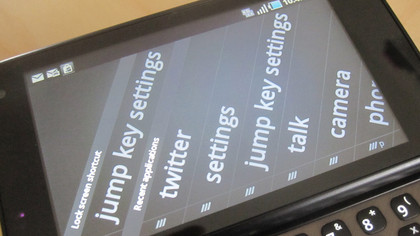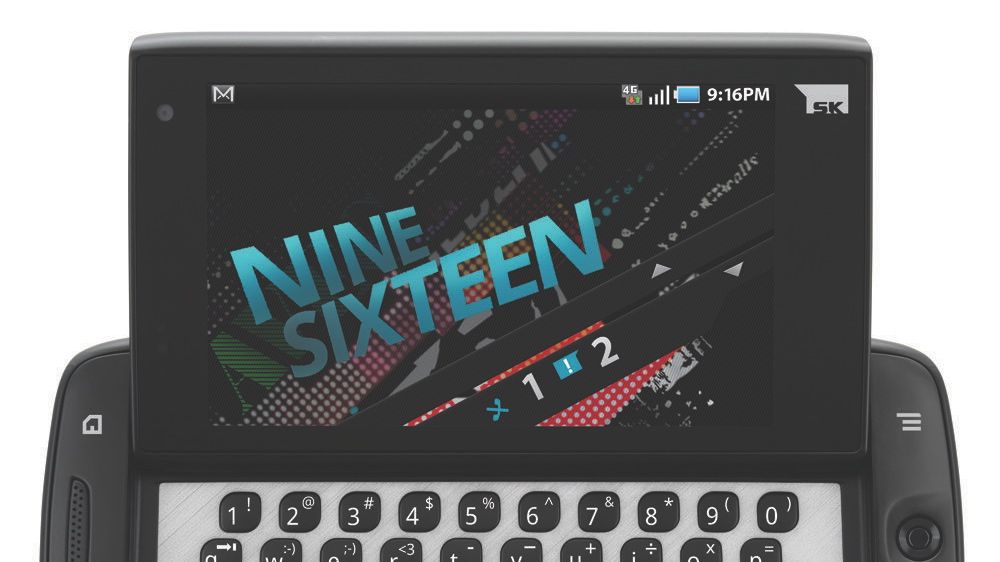TechRadar Verdict
Long time fans of the Sidekick line will feel right at home, while those who simply want an affordable, mid-range Android device with a full QWERTY keyboard need not look any further.
Pros
- +
Stylish design makes the Sidekick 4G a clear stand out among most Androids
- +
Both the QWERTY keyboard and hinged display are the best of their kind
- +
One of nicest Android re-skins you'll find anywhere
Cons
- -
The Sidekick 4G's melding of old and new will confuse regular Android users
- -
The attractive UI is still yesterday's operating system
- -
The attractive UI, and lack of horsepower, results in a sluggish experience
Why you can trust TechRadar
Not long ago, T-Mobile's Sidekick was the ultimate solution for keeping friends abreast of your daily minutia. But that was before status updates officially became a thing, and such functionality became standard in all phones. Along with a series of embarrassing missteps that did much harm to the line's legacy.
One that has been largely forgotten thanks to the rapidly changing climate of cell phone technology and habits. Which is why many might be scratching their heads at the idea of the brand's revival. But that's exactly what T-Mobile is attempting.
The Sidekick 4G has hardware by Samsung, software by Google and the verdict? A surprisingly competent device, one that can hold its own among other Android handsets in its class.

The first thing that most will notice is the design, which clearly reflects its legacy. The end result is a breath of fresh air; almost every Android handset on the market today, even with a sliding keyboard, largely resembles an iPhone to a certain point. Not the Sidekick 4G.
The device sports a 3.5-inch screen that has a resolution of 480 x 800 pixels. By itself, it's nothing worth getting excited over, but the QWERTY interface that's nestled underneath is noteworthy. There's plenty of room between keys, resulting in a hassle-free typing experience. Plus their feel, along with the sound they make when contact occurs, amounts to one of the best keypads you'll find on any smartphone today.

But the real star is the hinge that allows the QWERTY interface to be either exposed or hidden behind the display. Unlike most previous models, which have mostly sported a swivel-type mechanism, by simply pushing the lower lip just a solitary centimeter will gracefully slide the screen upwards.
Yet the hinge is no pushover either; the construction is supremely solid. Even after steady, aggressive use, it still feels just as tight as when the phone was first taken out of its box.
Sign up for breaking news, reviews, opinion, top tech deals, and more.

At each corner on the face of the phone are buttons, which are also carryovers from the original Sidekick line. But because of Android, the mix of old and new may lead to confusion among many longtime users of the platform. To the point that one has to wonder why the stock hardware button icons weren't simply used instead.
Behind the phone are two rubberized areas for gripping. While nothing substantial, it does feel nice and gives the device further character. The top is where the USB port is positioned, along with button to allow quick access to the camera app. Though the phone must first be woken up, if it's in sleep mode, and unlocked for any picture taking to happen.
At the bottom of the phone is the power key, to either wake the device up or turn it on/off. The volume rocker is also found down there, right next to the headphone jack. The placement for all these physical elements made total sense. Battery life is also respectable, and despite being made almost entirely of plastic, the Sidekick 4G feels great in the hand. Nice and sturdy, with a decent sense of weight.
But the hardware is not without faults. The rear facing camera is only 3.15 megapixels and serviceable at best. There's a front facing camera as well, which is VGA. Also on the front is an optical track pad that's rather pointless in portrait mode, and difficult to use in landscape, which is when it's supposed to be used. And underneath it all is a Cortex A8 Hummingbird CPU, plus a PowerVR SGX540 as the GPU.

On paper, the two chips sound like a competent pair, but they sometimes struggle to keep the Froyo party going. The touchscreen interface can be sluggish, especially while scrolling. And when performing certain functions, primarily when playing video or running graphically intensive games, the Sidekick 4G has been known to lock up.
At least the image quality is impressive, given the low resolution and how the display is LCD instead AMOLED, which is the norm among Samsung handsets. Text and images always look crisp, plus colors shine.
The interface can also be confusing, depending on what orientation the phone is at, but this is an issue that persists among many Android handsets that has a QWERTY keyboard into the mix.

On the positive side is Samsung's skinning of Android; it's miles above anything you've seen on their flagship Galaxy phones. The lock and jump key screens are super stylish, to make itself even more attractive to a younger, hipper audience.
But seeing the time on the lock screen displayed via words and not numbers will appeal to anyone with keen design sensibilities. The Sidekick 4G's is clearly aimed at teens, and manages to hit its target successfully without pandering, thanks to genuine ingenuity. Samsung deserves much credit for that. Yet it can also be argued that one reason for the aforementioned sluggishness is due to graphical overlay that is being rendered.
And as everyone already knows, the Sidekick was designed with the broadcasting information in mind. The 4G comes equipped with built-in Twitter, Facebook, and even MySpace functionality, courtesy of Samsung's Social Networking Sync. It attempts to merge people's identities from assorted social networks, but pruning, due to duplicate entries, is still a minor headache, and most may want to stick with official clients in the end.
When it comes to surfing the web, the device lives up to its updated moniker, thanks to T-Mobile's HSPA+ 4G network. And as for the actual phone part of the phone, like making calls, voice quality was exemplarily on both ends.
The verdict
Our time spent with the Sidekick was generally positive. A sometimes-confusing interface, one that is hampered with slow speeds was the biggest turn offs. Yet neither were deal breakers, and the 4G accomplished what it set out to do, with stylishly crafted and solidly built hardware, and one of the most attractive looking skins even devised for Android.
Long time fans of the line will feel right at home, while those who simply want an affordable, mid-range Android device, yet one that is still very much unique, need not look any further.
